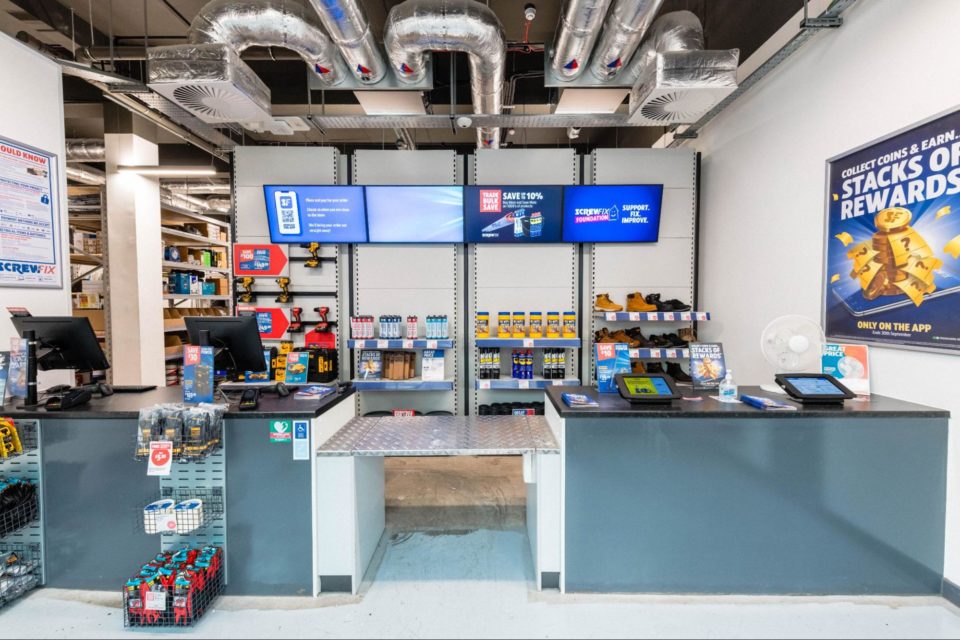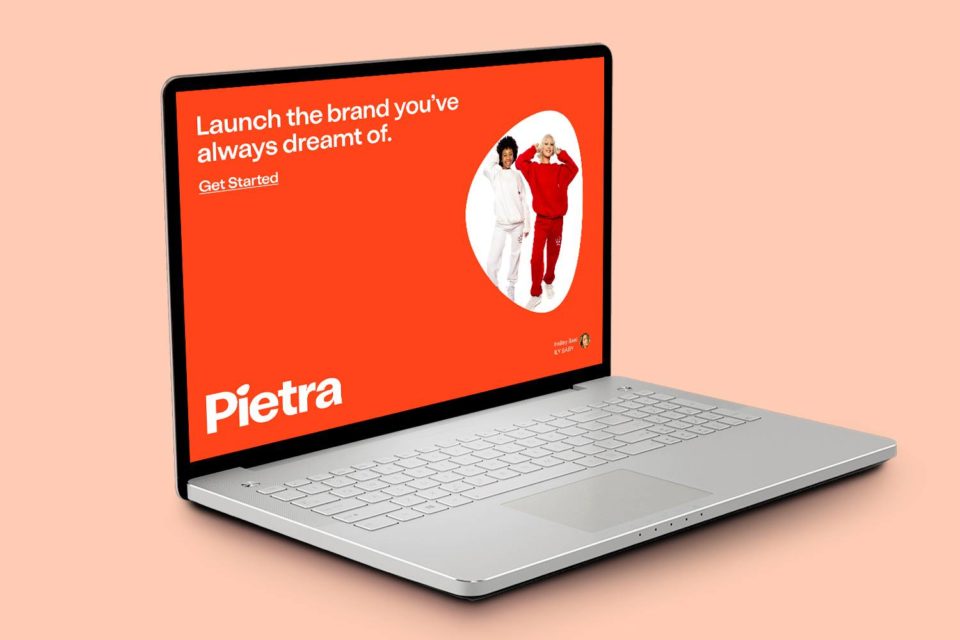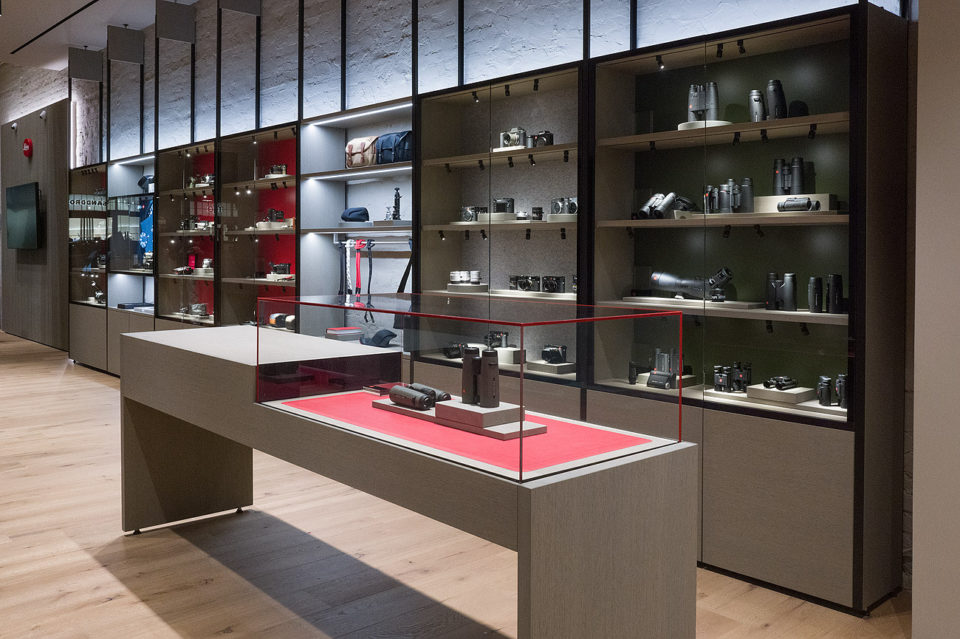The power of open innovation – insights from Roland Harwood of 100% Open

Open innovation agency 100% Open is helping the likes of Unilever, Procter and Gamble, LEGO and Tesco harness the power of external ideas. We talked to Managing Director Roland Harwood about looking outside your organisation and how open innovation can help retailers develop faster than going it alone.
In a nutshell, can you tell me what 100% Open does?
We are an open innovation agency. We help organisations think about open innovation. Usually we connect brands and large multinational corporations with start-ups or creative entrepreneurial individuals. We do this through a number of different ways, such as innovation competitions, or large online crowdsourcing communities where we gather insights and ideas. In some cases we develop new products and services with a community of customers. We also do consulting and training around how an organisation can be more open and access more external opportunities.
Is there a typical project that captures what can be done with open innovation compared to the standard internal innovation approach?
One of the things we’re most proud of having played a part in helping to create is the LEGO Ideas Community. It was one of our first projects as a company. We were asked by LEGO to help them develop an open innovation strategy. They felt they needed to be more explicit about how they access and develop externally generated ideas from customers or suppliers. We were part of the small community called LEGO Ideas, initially with about 200 LEGO employees. We were just trying to get some input around new innovation ideas. Based on that we eventually helped them scale it up to their entire employee base of around 11,000 at the time. Then we helped LEGO develop the process for launching it externally to their customers and their fans and helped them bring on a technology partner.
Now the LEGO Ideas Community that we helped get off the ground is about a million people or more. The way the model works is that anybody can post an idea for a new LEGO product. They then have to get 10,000 people to support their idea within a 12 month period. Some of them reach that threshold within 24 or 48 hours. If they reach that 10,000 threshold the idea goes into a review process where LEGO assess whether it fits the LEGO brand and a whole load of other criteria.
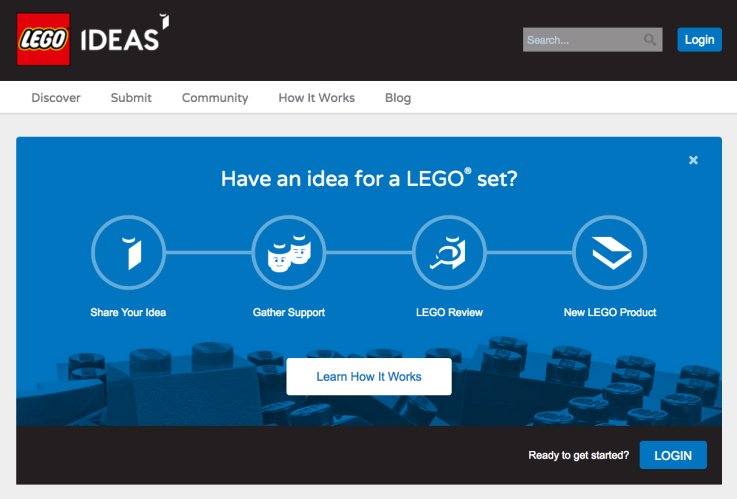
LEGO currently produce four products a year that come out of this community and they share 1% of the revenue of that new product with the person who came up with the idea in the first place. Incidentally nearly every single one of these products sells out very quickly once they’re launched. So it’s a sure fire way for LEGO to innovate, to develop new products and services, because it’s created with a community of their fans.
For a company like LEGO, where 60% of their products are new every year, there’s a high degree of novelty in what they do. One of the biggest risks is launching a product that won’t sell. Having a process where essentially they pre-market products that don’t exist yet, and get at least 10,000 people to say I would to buy this, massively de-risks the innovation process for them. Commercially it’s very successful and profitable. The fans love it as well. Often they give away their 1% revenue to charity, so they’re not just doing it for financial gain. They’re doing it for a whole range of different reasons and motivations.
As a secondary benefit it gives LEGO tons of consumer insight about what people care about. Right down to knowing that in Portland, Oregon, there’s a particular preference for certain colours and shades of LEGO bricks. Now they’re starting to think about ‘how can we use some of that data that we are gathering in this community to really customise and tailor our products for specific areas’. And ultimately even for specific individuals. It’s a very successful community. Arguably, LEGO is the world’s most successful consumer crowdsourcing community. And it’s something that we helped get off the ground. We weren’t the only people involved. But I think we were reasonably instrumental and it’s something that we’re particularly proud of having helped to create.
Do you think LEGO will start to use more open innovation methods for other parts of their business having had so much success with the Ideas platform?
Absolutely. This has been a very successful model for them and one that they’re looking to scale and apply much more widely in their business. Because even though the LEGO Ideas Community has been very successful it’s primarily targeted at adults rather than kids, and LEGO’s core market is of course children. And it’s still quite niche – niche products for a niche audience.
They’re definitely looking to build on the success of it and they’re looking at how they can apply some of these principles to other aspects of their business as well. Not just product and service development, even though that’s a core part of what they do.
In terms of projects with retailers, what would you love to be asked to do or re-invent?
That’s an interesting question. We did a nice project for Selfridges a couple of years ago around the future of retail. We took futuristic new retail propositions and exhibited them on the ground floor of Selfridges, particularly targeting high net worth potential clientele to wow them with a new retail proposition. That was definitely fun and interesting.
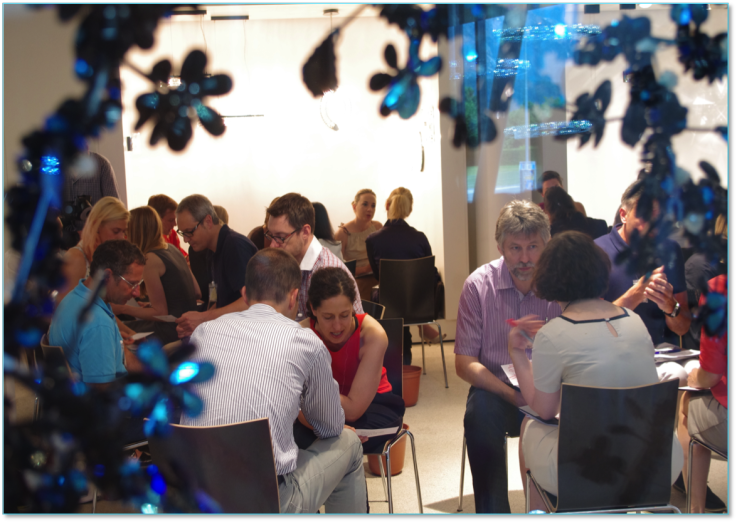
We also did a piece of work with Swarovski around luxury, reimagining their product range and how that could be developed and repositioned within the online community. I don’t think we’re particularly precious about working with any particular brand or in any particular category. We believe that things that are created with, for, and by a community are more successful – they’re loved more. And it’s just a better way of working. I would be keen to apply some more of these principles to retail brands and do more work in this space.
Do you think open innovation is still quite niche in retail? Is it quite a brave thing for brands to do, or do you think as people become more aware of it more are willing to try these things?
I think it’s much more mainstream than it was. I don’t think it’s actually that unusual. People don’t necessarily call it open innovation or innovation or crowdsourcing anymore – it’s just the way that things happen. It’s almost more common to develop products and services with your customers or your suppliers or whoever, then it is to not do that and do it in a closed secretive way – what some people might describe as a 20th century way of working.
I think there’s still a lot of uncertainty about how to do it well though. There’s still a lot of experimentation and some things definitely work better than others. So there’s always room for improvement and learning. Also, I don’t think what works for LEGO for example will necessarily work for Hasbro or another brand or another retailer in a carbon copy way. These things need to be tailored and customised based on who the client is and who the customer is. But yes, we’re not seeing too much resistance to these things as a concept. The resistance is always more technical and bureaucratic or process orientated. It’s about how we make decisions and commit investment and manage expectations all round internally, as well as externally.
In fact internal expectation management is sometimes more challenging. The hurdles internally are often harder to navigate than those externally for all sorts of reasons political and cultural. So much of what we do is trying to hunt those out and address them before we do anything that’s public facing. Because what undermines the success of some open innovation initiative is when somebody pops a head above the parapet saying, ‘You can’t do that or you need to interface with this process which takes 12 months to go through,’ or whatever it might be that can just slow things down. A lot of the work that we do is not visible, it’s internally facing to try to tackle those organisational antibodies early and upfront. So that you can then move swiftly once you go live.
As the experts what are your top tips for running a successful open innovation project or innovation project as people are now calling this?
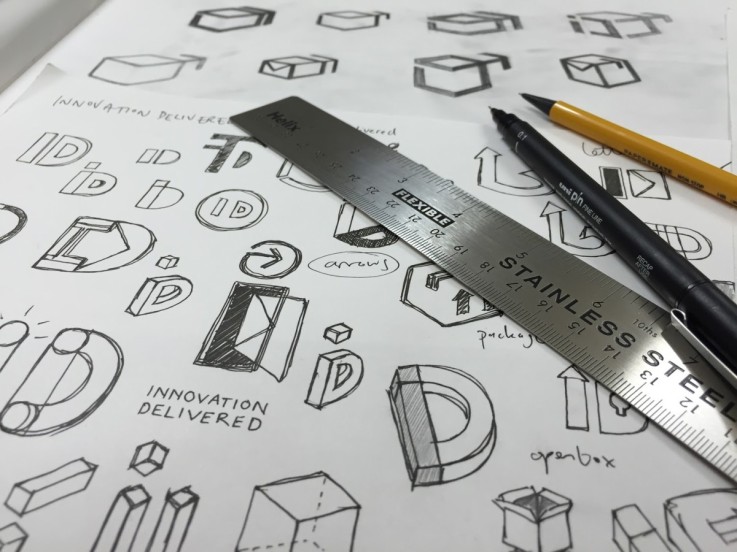
I think you have to start with a need, not a want. So often the mistake that companies make is they do something that’s not that important and they don’t get behind it fully. Because they want to just see how this might work. But if it’s done half-heartedly it’ll undermine the process. So I think if you can find a way to share something that you really, really need, and you’ve got the senior backing and the process to actually then implement the ideas or solutions that you get back, then that’s really helpful.
You should do as much planning as you can, so that you don’t move the goalposts partway through the process. I think the worst thing that you can do when you launch some open innovation initiative is to say, ‘we want lots of ideas or we want lots of solutions.’ But you’re a bit too vague about what you want and when you want it and all the rest of it. And then the goalposts keep on shifting and moving. That’s a quick way to demotivate your community. I think if you can lock down as much of that at the beginning as possible before you go that’s very helpful.
Again it sounds blindingly obvious, but be interested in what you’re doing and why you’re doing it. A lot of what we do is helping companies craft an interesting question to underpin some open innovation challenge or programme or competition. And often organisations become myopic and a bit inward facing. They use acronyms and jargon and all kinds of stuff, which makes sense to them but makes no sense to anybody else outside.
I’ve noticed that a handful of retailers are actually opening up their retail spaces almost as a community space, so customers can come in and actually get to know each other and be involved. There’s a whole changing mind-set about giving up a bit more control.
Yes I’m sure. There’s a lovely quote from Peter Drucker saying, “The challenge of 21st Century leadership is about learning to give up control gracefully and without loss of face.” Not having to do it all yourself and realising that actually it’s better and more effective if you don’t necessarily do it all yourself. I see that again and again. It’s not launched yet but the work we’re doing with Ford is around some retail spaces that are launching in New York, Shanghai, London, and San Francisco called FordHubs. It’s an Apple store-esque experience which is an interesting concept and they’re not the only brand that’s doing that as well.
I think the role that these retail experiences and places play is very different now to what it was five years ago, 10 years ago. I think that’s quite an interesting initiative, figuring out how the physical space of bringing people together combines with the process of buying and selling, which might happen online, might happen out of the store, might happen in a range of different ways. I think that’s a very interesting trend.
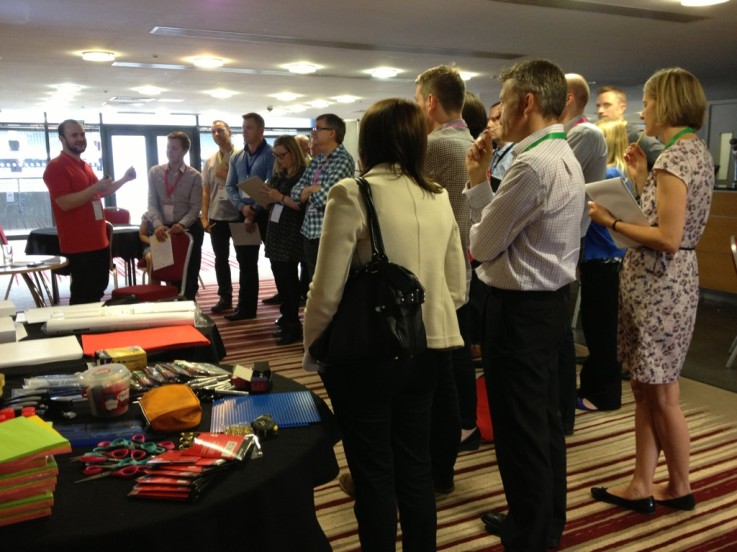
For example Argos are on one level quite a traditional, old fashioned organisation, but they’re embracing digital in quite a significant way and doing an Amazon but from the other way round. They’re starting from being the internet on the high street as it were. In theory they have access to any product within reason and you can pick it up from your local high street. So approaching the Amazon model but from a physical retail presence first and as the digital retail presence second. Whereas all their equivalents are coming at it from the other way round. That’s playing out in an interesting way in the high street as well. It’s a fascinating space – I think it needs experimentation, it needs people to play with a model and see what works.
From what I’ve read about Ford it seems to be a whole mind-set shift around who they are. Did that come from inside or from the community?
I think the whole automotive world is being massively disrupted by the likes of Uber and Google self-driving cars and people like Tesla. I think a lot of the big automotive firms, including another global automotive company who we worked with recently as well, are thinking, ‘I don’t think we’re going to be selling nearly as many cars in the future as we do today. But we might be selling transportation and mobility as a service. So what does that look like? How do we ensure that that retains a branded experience and look and feel and all the rest of it? And what does that consist of? What’s in scope? What’s out of scope?’
I know the decision to change has come from the top of the organisation. This is a big strategic decision to look at this potentially very disruptive shift to their business model. A once in a century big shift in the way that we move around cities and places. So it’s very much coming from the top. But I think it’s also coming from customer research. And from big changes in the way that people are buying cars or not buying cars and moving around, and the role that brands can play in that space. I think that’s true presumably in fashion and food and all other aspects of retail as well.
What tools do you recommend that brands use to pick out the best ideas from those submitted?
It’s a lot of work – there’s no two ways about. It’s not necessarily easy and there’s not many shortcuts. If you’re smart you can get the community to do much of the heavy lifting and filter out the best ideas in the same way that the LEGO Ideas Community does. The LEGO Ideas Community is built on the technology of a Canadian company called Chaordix. We’re also working with them on the Ford project. They’re in the premium end of the market. There’s also another version in the UK called Crowdicity that we work with quite a lot and they’re very good too. Then there’s literally hundreds if not thousands of companies that do something quite similar. So there’s a lot of potential tools out there.
I think the success or failure of these things ultimately doesn’t come down to the tech that you use. It comes down to the culture and the strategy and the implementation, and everything but the technology. But I think having good technology tools can really help. Likewise, having good process tools are really essential. Who’s going to make decisions? What is the criteria that you’re going to use? What’s the flow of the competition if there is one?
We’ve built a free open innovation toolkit that helps break the innovation process down into six stages and there’s a number of process tools at each stage that we’ve developed. Like what do we need to think about this stage? How do we go about it? Things that will help people step through the process. We’re trying to educate the market in how to do this on the assumption that people will still want to come to us for our expertise and our experience.
What do you think is generally the primary reason why people come to you? Do you think at the moment it’s more about saving money? Or do you think it’s more about innovating faster?
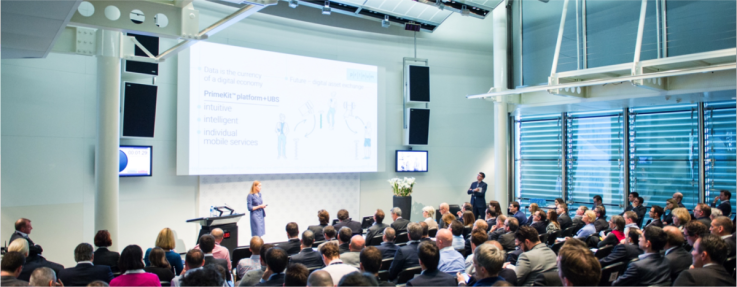
Often on paper it’s about delivering a return on investment. But actually indirectly I think what people really want is to look cool. Or to build a buzz around their brand or their company, whatever it might be. Doing something that’s much more open and collaborative and social really helps achieve that objective. It’s building the perception, and hopefully the reality, that this brand is more engaged with their customer base or the outside world. That they are much more grounded in what people really want and need and much more responsive to that.
I think often the brand benefits are as important as the cold hard return on investment. Normally we’re contracted to deliver a competition, a series of workshops, an online community that delivers propositions worth $10 million in revenue or whatever the target might be. But actually I think what people are buying more often than not, even though it doesn’t say this in the contract, is a way to look a bit cool or modern and forward facing. They’re also buying our network and experience. We’re pretty well connected and we can help them to accelerate. It is a shortcut to learning it all themselves.
We’re riding the wave of interest in this space and helping companies to do that. In some cases companies have never done this before or haven’t had much experience of doing it well. But more and more we’re a partner to think with and play with and work with to help figure out how to do this bigger and better going forward.
Finally, what brands do you really rate in terms of open innovation? Who would you say is really leading the charge in this space?
LEGO is one that I’ve already mentioned. I think Unilever for a big fast moving consumer goods company are very good at doing this. In the world of financial services UBS have now got behind accessing the external ecosystem of innovators in a very global and professional way. We worked with them and I’ve been pretty blown away at the scale and the professionalism and the seriousness with which they’ve taken that piece of work. I would definitely cite them as an organisation that does that very well. Actually one of the brands I keep on hearing about doing interesting stuff in this space is IKEA. They seem to be doing some interesting work – one to watch perhaps.
Watch this space for more interviews, retail openings and retail innovations.
You can also follow us on Twitter, Facebook or check out our LinkedIn page. See you soon!

